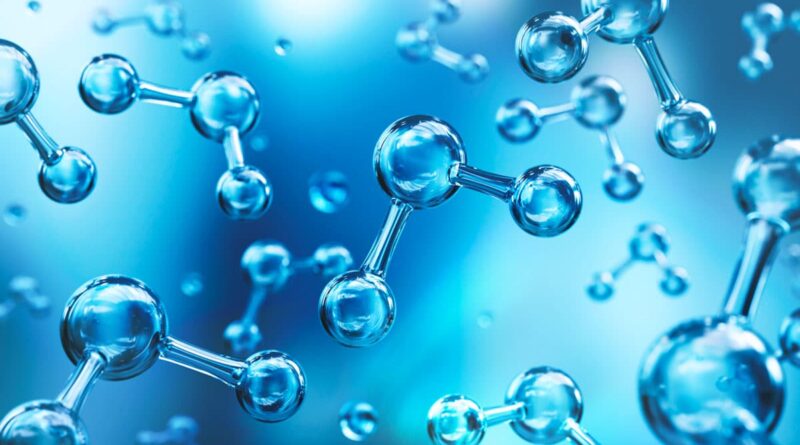Palladium Breakthrough: Creating water from air is revolutionizing science
Scientists have long been interested in the conversion of hydrogen and oxygen into water by using palladium as a solvent. This reaction is important in applications such as fossil fuels that produce clean energy. By better understanding this process, researchers aim to improve the efficiency of these technologies and contribute to the energy revolution.
Palladium’s unique properties allow this reaction to occur under normal conditions, without the need for extreme temperatures or pressures. This flexibility opens up opportunities to water production in challenging areassuch as :
- Dry areas
- Space activities
- Far away places
Additionally, palladium serves as a model to study how catalysts work. By gaining insight into the processes involved, scientists hope to improve the use of catalysts in various energy-related fields.
Producing chemical reactions with advanced technology
To unravel the hidden mechanisms that caused hydrogen and oxygen to turn into water, researchers used advanced technology: scanning electron microscope (TEM). This technique allowed them to see nanoscale processes in real time when palladium facilitates chemical reactions.
The experimental procedure involved embedding hydrogen atoms in a palladium structure, which can trap and store these small atoms. Oxygen was then added to the palladium, which caused a remarkable reaction: hydrogen atoms came out of the metal to react with the oxygen, forming water in the form of bubbles. nanoscale – perhaps the smallest bubbles ever seen directly.
This research success is mainly due to recent technological advances, especially the development of very thin glass layers. This new technique allows gas molecules to exist in tiny honeycomb-shaped particles so small that they can be seen using an electron microscope.
Introduced in January 2024, this new method enables sample analysis with an impressive resolution of 0.102 nanometers, much more precise than previous microscopes that reached a resolution of 0.236 nanometers. This technological breakthrough opened up the possibility of seeing the world that was not visible before, which enabled scientists to better understand the intermediate steps of the chemical reaction between hydrogen and oxygen.
| Technology | Decision |
|---|---|
| A New Way (2024) | 0.102 nanometers |
| Previous microscopes | 0.236 nanometers |
Transition tools : from Earth to space
Although this discovery may appear to be a laboratory masterpiece, its practical application is truly revolutionary. Producing water from simple gases such as hydrogen and oxygen using a renewable resource such as palladium could have significant impacts in many fields, particularly in addressing water needs in hostile or remote areas.
Imagine a future where astronauts traveling to Mars can produce their own water from on-site resources. The process could be simpler and safer than current methods, such as burning fossil fuels to produce hydrogen or transporting large amounts of water from Earth. The behavior does not require extreme temperatures or special pressure conditions, which makes it suitable for space applications.
This technology can also be used on Earth in water-scarce areas. India is using Star Wars-like technology to combat water scarcity, showing how sci-fi solutions become reality in solving the world’s water problems. Deserted or drought-prone areas can benefit from this method of producing water locally from the primary elements of the Universe.
Unlike other chemical processes that consume valuable resources or produce waste, this process uses palladium regularly. Although it is a rare metal, it can be recycled and can be used indefinitely to make water without spoiling. The only source used is gas, and hydrogen is the most abundant element in the Universe.
Implications for sustainable resource management
The success of palladium in water production has major implications for sustainable resource management. As the world faces climate change and resource scarcity, innovative solutions like this can play an important role in ensuring water security for future generations.
This technology is adapted to the growing trend of developing sustainable solutions for resource management. For example, photovoltaic panels in the middle of the oceans are being explored as a possible future for renewable energy. Likewise, palladium-based water-forming processes can be combined with other sustainable technologies to create more efficient and environmentally friendly processes.
The flexibility of this method of creating water opens up opportunities for its integration with different industries. For example, in Réunion, a fish farm produces caviar using photovoltaic energy, which shows how new technologies can be combined to produce sustainable and efficient systems. Palladium-based water softeners can be incorporated into such systems, providing a reliable source of water for aquaculture and other water-intensive industries in remote or resource-scarce areas.
As research in this field continues, we can expect further developments and applications of this technology. The ability to make water from air with palladium not only represents a major scientific breakthrough but also offers hope for tackling many of the environmental and resource problems of our time.
#Palladium #Breakthrough #Creating #water #air #revolutionizing #science
